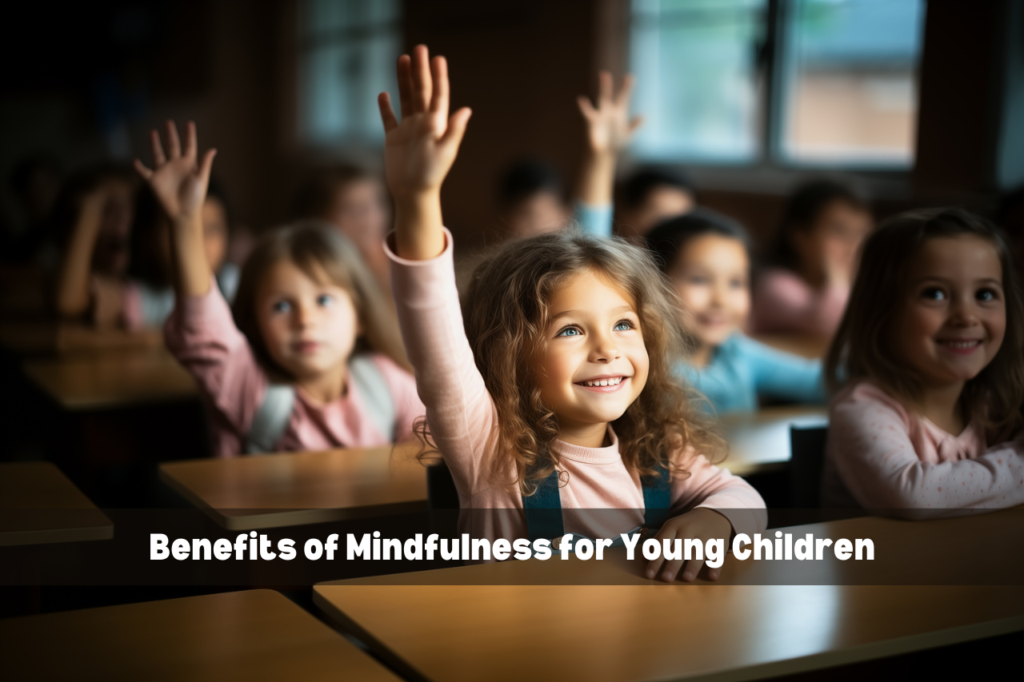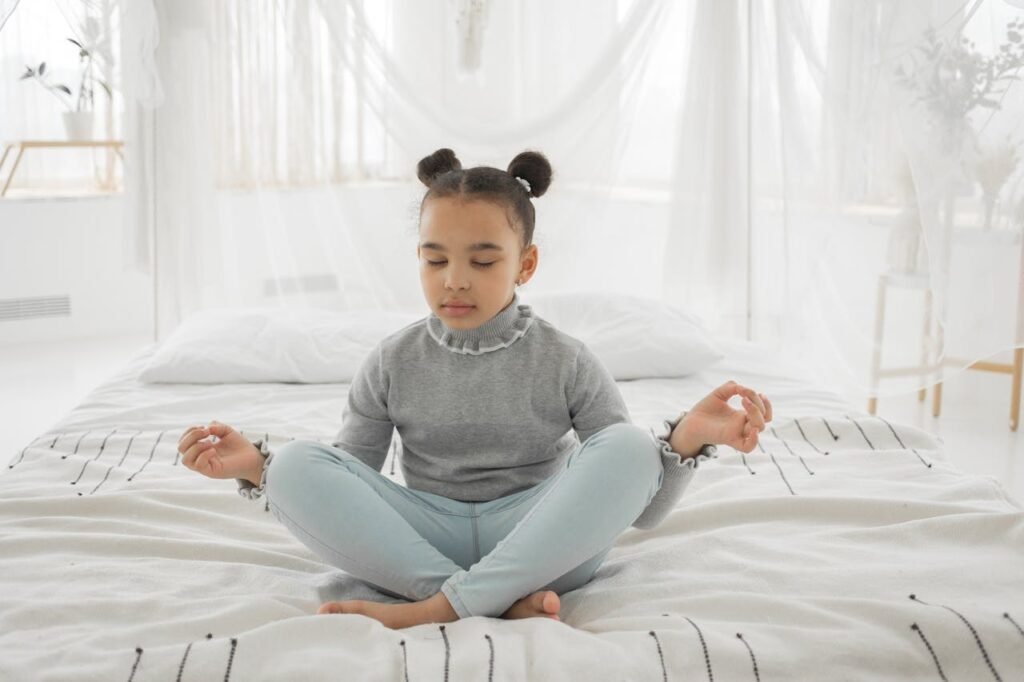
Introduction
In the dynamic world of early childhood education, fostering focus and calm in young learners is crucial for their overall development. Mindfulness, a practice centered on being fully present, provides an effective approach to achieving this balance. By integrating mindfulness into Early Childhood Care and Education (ECCE), educators can profoundly support children’s cognitive, emotional, and social growth. The BEST Teacher Training Institute in Mumbai Borivali and Best ECCEd Teacher Training Institute in Mumbai Borivali emphasize the importance of such practices.
Mindfulness encourages children to observe their thoughts, feelings, and sensations with kindness and curiosity. The results are compelling—enhanced attention spans, improved emotional regulation, and reduced stress and anxiety. Institutions like the Best Jolly Grammar Teacher Training Institute in Mumbai Borivali and Best Jolly Phonics Teacher Training Institute in Mumbai Borivali equip teachers with the tools to implement mindfulness, setting the foundation for these vital skills to flourish early in life.

1. Benefits of Mindfulness for Young Children
1.1 Improved Focus and Attention Span
In an age of constant stimulation, developing a strong attention span is crucial, particularly in the formative years of a child’s life. Mindfulness has been shown to help young children stay present and focused on tasks, rather than being overwhelmed by distractions. Mindful breathing exercises and sensory activities can sharpen a child’s ability to concentrate, which is essential in both academic and social settings.
Studies suggest that incorporating mindfulness into early education can lead to significant improvements in attention and focus. According to research published in Frontiers in Psychology, children who practice mindfulness regularly demonstrate better task management and sustained attention over time. For educators, this means a more engaged classroom and more effective learning outcomes, which can be further supported by institutions like the BEST Teacher Training Institute in Mumbai Borivali, known for offering tools to integrate such practices.

1.2 Enhanced Self-Regulation
Self-regulation, the ability to manage emotions and behaviors, is another key skill that mindfulness can nurture. Mindfulness helps young children regulate their emotions and respond thoughtfully.
Educators and parents alike can witness the calming effects of mindfulness on a child’s mood and behavior. Mindful breathing or guided imagery can help children ground themselves in moments of heightened emotion, leading to fewer emotional outbursts and a calmer classroom environment. Teacher training programs, such as the Best ECCEd Teacher Training Institute in Mumbai Borivali, often emphasize the importance of equipping educators with strategies to foster self-regulation in young children.

1.3 Improved Emotional Well-being
Beyond focus and self-regulation, mindfulness can profoundly impact a child’s emotional well-being. Anxiety and stress are not exclusive to adults; even young children can experience these feelings. Mindfulness can act as a buffer against these emotions, promoting a sense of inner calm and resilience. Mindfulness encourages empathy and compassion, both towards oneself and others, which are essential in fostering positive social interactions.
When children are taught to mindfully observe their emotions without judgment, they are better equipped to handle life’s challenges. Whether through a simple breathing exercise or mindful storytelling, children learn to navigate their inner world with more ease, creating a ripple effect that improves the overall atmosphere in the classroom. Institutions like the Best Jolly Phonics Teacher Training Institute in Mumbai Borivali help teachers integrate these practices into phonics lessons, making learning an emotionally safe experience for all children.

2. Mindfulness Activities for Young Children
Implementing mindfulness in the classroom doesn’t have to be complicated. Here are a few simple but effective activities that can easily be adapted for young children:

2.1 Simple Breathing Exercises
Teaching children to take deep, mindful breaths can help them calm down during stressful moments. A few minutes of mindful breathing can reset a child’s emotional state, making it easier to focus.

2.2 Mindful Storytelling
During storytime, encourage children to notice their thoughts and feelings as they listen. Ask them to imagine being in the story, which helps enhance focus and empathy.

2.3 Guided Imagery
This involves leading children on a mental journey, encouraging them to visualize calming scenes, such as a quiet beach or peaceful garden. This activity fosters relaxation and creativity.

2.4 Yoga for Kids
Simple yoga poses paired with mindful breathing can help children develop body awareness and emotional balance, promoting both physical and emotional health.

2.5 Nature Mindfulness
Taking time to observe the natural world—whether in a garden or during a walk—can help children stay grounded and present.

2.6 Mindful Eating
In this activity, children are encouraged to focus on the tastes, textures, and sensations of eating, promoting gratitude and attentiveness.
Many classrooms that incorporate these activities have seen tangible benefits in the children’s behavior and emotional stability. For example, one school working with a child with ADHD reported that mindful breathing and guided imagery helped the child manage their emotions more effectively. Programs from institutes like the Best Jolly Grammar Teacher Training Institute in Mumbai Borivali ensure that teachers are well-versed in implementing these strategies alongside academic learning.

3. Incorporating Mindfulness into the Classroom
3.1 Creating a Mindful Classroom Environment
Teachers can create a calm and welcoming environment by incorporating mindfulness into daily routines. Simple things like a “quiet corner” for calming down or soft music can help cultivate a mindful atmosphere.

3.2 Mindful Routines and Transitions
Transition times can often be chaotic for young children. Mindful activities, such as a brief breathing exercise before switching tasks, can help smooth these transitions and maintain a sense of calm.

3.3 Mindfulness in Curriculum Activities
Mindfulness doesn’t have to be separate from academics. Teachers can weave mindfulness into activities such as reading or math by encouraging students to stay present and mindful of their actions.

3.4 Teacher Mindfulness and Modeling
Children often model the behavior of adults. When teachers practice mindfulness themselves, they set a powerful example. Teacher training programs, such as those at the Best ECCEd Teacher Training Institute in Mumbai Borivali, ensure that educators learn how to practice mindfulness and impart it to their students.

4. Overcoming Challenges and Considerations
4.1 Addressing Potential Concerns
Some may worry that young children may find mindfulness too abstract. However, with proper guidance and age-appropriate practices, even the youngest children can benefit from mindfulness.
4.2 Tailoring Mindfulness Practices to Individual Needs
Every child is unique. Some may respond well to breathing exercises, while others might prefer guided imagery or yoga. It’s essential to tailor mindfulness practices to suit individual needs.
4.3 The Role of Parents in Supporting Mindfulness at Home
Parents play a vital role in reinforcing mindfulness outside the classroom. Simple activities, like mindful eating at dinner, can further embed these practices into a child’s daily life.

Conclusion
Mindfulness offers countless benefits for young children, from improving focus and attention to enhancing emotional well-being. By creating mindful classroom environments, educators can support the development of these critical skills. Teachers, with support from the BEST Teacher Training Institute in Mumbai Borivali, are in a unique position to bring the benefits of mindfulness into early education, helping children build a strong foundation for life.


